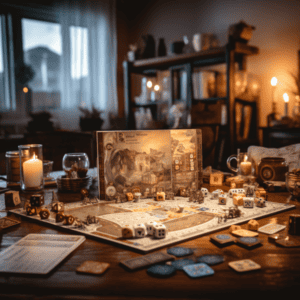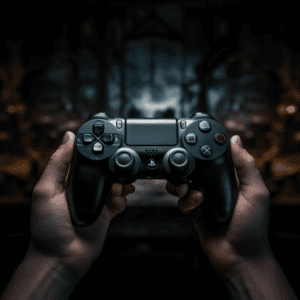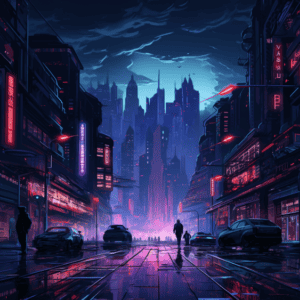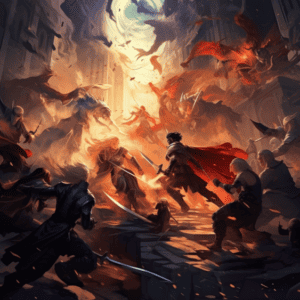
The Magic Of Turn-Based Combat: Why Classic JRPG Mechanics Still Thrive Today? It’s no secret that the gaming industry has undergone some major transformations over the past few decades. With technological advancements and changing consumer preferences, many classic game mechanics have lost their luster in favor of new, more action-packed experiences.
However, there is one tried-and-true gameplay style that continues to thrive today: turn-based combat. In fact, according to a recent survey by Game Informer, 70% of gamers still enjoy playing games with turn-based combat systems.
This statistic alone speaks volumes about the enduring appeal of this classic JRPG mechanic. But what exactly makes turn-based combat so magical? Why do players keep coming back for more, even as other genres rise and fall in popularity? In this article, we’ll explore these questions and delve into the unique qualities that make turn-based RPGs such an integral part of modern gaming culture.
The Evolution Of Turn-Based Combat
Turn-based combat has been a staple of video games since the early days of RPGs. It allows for strategic depth and player choice, as well as emphasizing character development and party uncertainty. The style of combat pales in comparison to action-based combat when it comes to flashy visuals, but turn-based games have managed to thrive through their unique mechanics.
One reason why turn-based combat still remains relevant today is due to its evolution over time. Encounter design has become more complex, with major encounters requiring careful planning and utilization of each character’s strengths.
Games like Divinity Original Sin 2’s story mode offer multiple modes that cater to different playstyles while still retaining the core elements of tactical turn-based gameplay. With new titles coming out on Nintendo Switch such as Dragon Quest XI S: Echoes of an Elusive Age – Definitive Edition and Square Enix’s Octopath Traveler, it’s clear that this genre isn’t going anywhere anytime soon.
Strategic Depth And Player Choice

One interesting statistic about turn-based combat games is that they offer a deeper level of strategic depth and player choice compared to action-based combat. In turn-based games, players have more time to analyze the situation, plan out their moves, and consider different options for each character in their party. This allows for a more thoughtful approach to combat, where every decision counts and can ultimately affect the outcome of major encounters.
Characters are also given more agency in turn-based games, as they can be customized with unique skills and abilities that complement the strengths and weaknesses of other members in the party. Video games have been able to capitalize on this feature by creating memorable characters that players become invested in throughout the course of the game.
From Dragon Quest’s iconic silent protagonist to Square Enix’s diverse cast of heroes, these characters not only drive the story forward but also add an extra layer of strategy to battles. Players must constantly think about which character to use for specific tasks or how best to utilize their individual skill sets during combat.
The appeal of classic jrpg mechanics still thrives today because it offers something unique that cannot be found in real-time games. Turn-based combat provides players with a sense of control over their actions while allowing them to strategize at their own pace. It also gives developers more opportunities for encounter design and party uncertainty, which keeps gameplay fresh and exciting throughout the entire experience.
Additionally, the emphasis on character development creates a deep emotional connection between players and their favorite characters, making it harder to say goodbye once the adventure comes to an end.
The Appeal Of Classic Jrpg Mechanics
With so many action-based combat games available in the market, it’s easy to forget the magic of turn-based combat. However, classic JRPG mechanics still thrive today and continue to enchant players worldwide. The reason behind this is simple – the style of combat offers strategic depth and player choice that other modes fail to deliver.
Turn-based games allow for careful consideration of each move made during an encounter, making every decision crucial towards winning or losing a battle. This creates a sense of weight and consequence that an action game can never replicate. Additionally, character development is also given more attention as party members have unique abilities and roles within battles, which allows them to grow alongside the story itself.
Video games like Dragon Quest and Wild Arms are perfect examples of how these elements work together harmoniously to create unforgettable experiences. Turn-based combat lends itself well to immersive storytelling where characters play pivotal roles. Party development becomes a significant aspect of gameplay since each member has their own strengths and weaknesses. Encounters become major milestones in character progression instead of just hurdles to overcome.
As much as we love our Nintendo Mario Parties or Dragon Ball FighterZ two-player modes, there’s something special about turn-based RPGs that keeps us coming back for more. Divinity Original Sin 2’s encounter design or Square Enix’s spiritual successors both demonstrate why this particular style of combat pales in comparison with real-time games when properly executed.
With party uncertainty being one factor adding extra tension into encounters, developers such as Black Isle Studios or Arkane Studios have created moments that stay with players long after they complete the game.
Conclusion
In conclusion, turn-based combat is like a well-crafted potion that never loses its potency. It has evolved over the years to cater to modern gaming tastes while still retaining its classic charm. The strategic depth and player choice it offers are unparalleled, making each battle feel like a chess match where every move counts.
As someone who has been playing JRPGs for over two decades, I can attest to the appeal of these mechanics. They provide an immersive experience that allows players to fully engage with their characters and the world around them.
Turn-based combat may not be everyone’s cup of tea, but those who appreciate it know just how magical it can be. Whether you’re a seasoned veteran or a newcomer to the genre, there’s no denying that classic JRPG mechanics still thrive today thanks in large part to the enduring power of turn-based combat.






